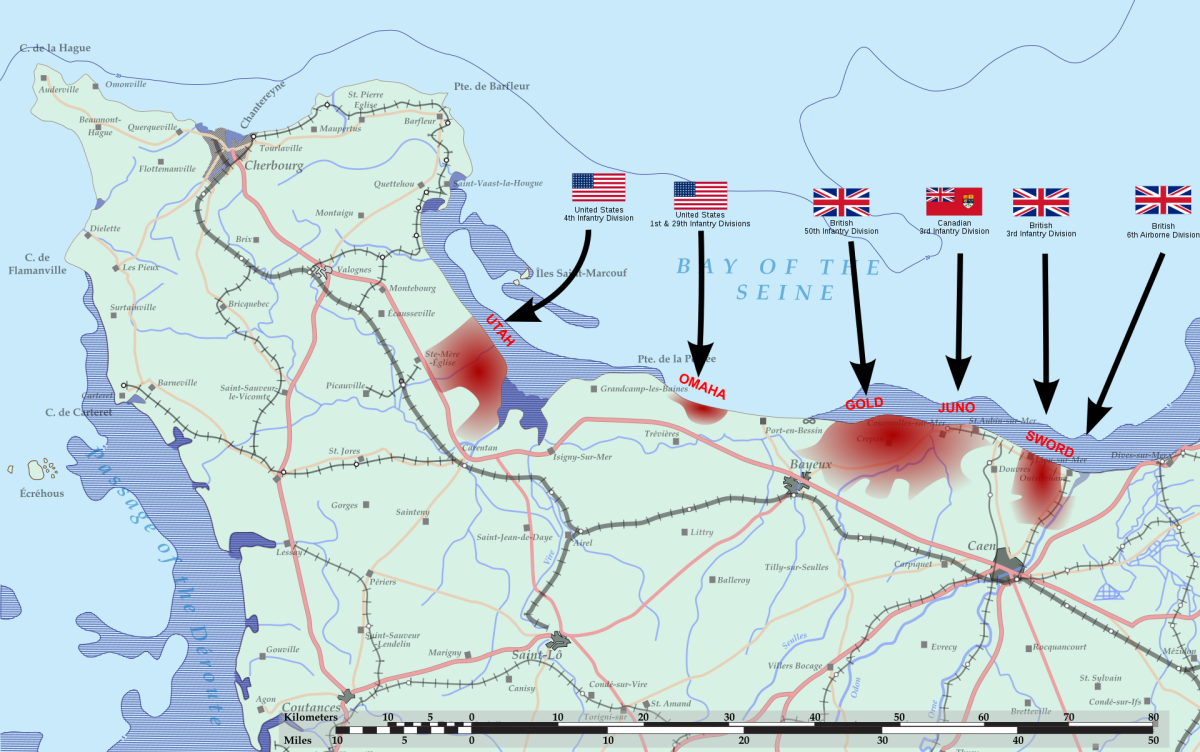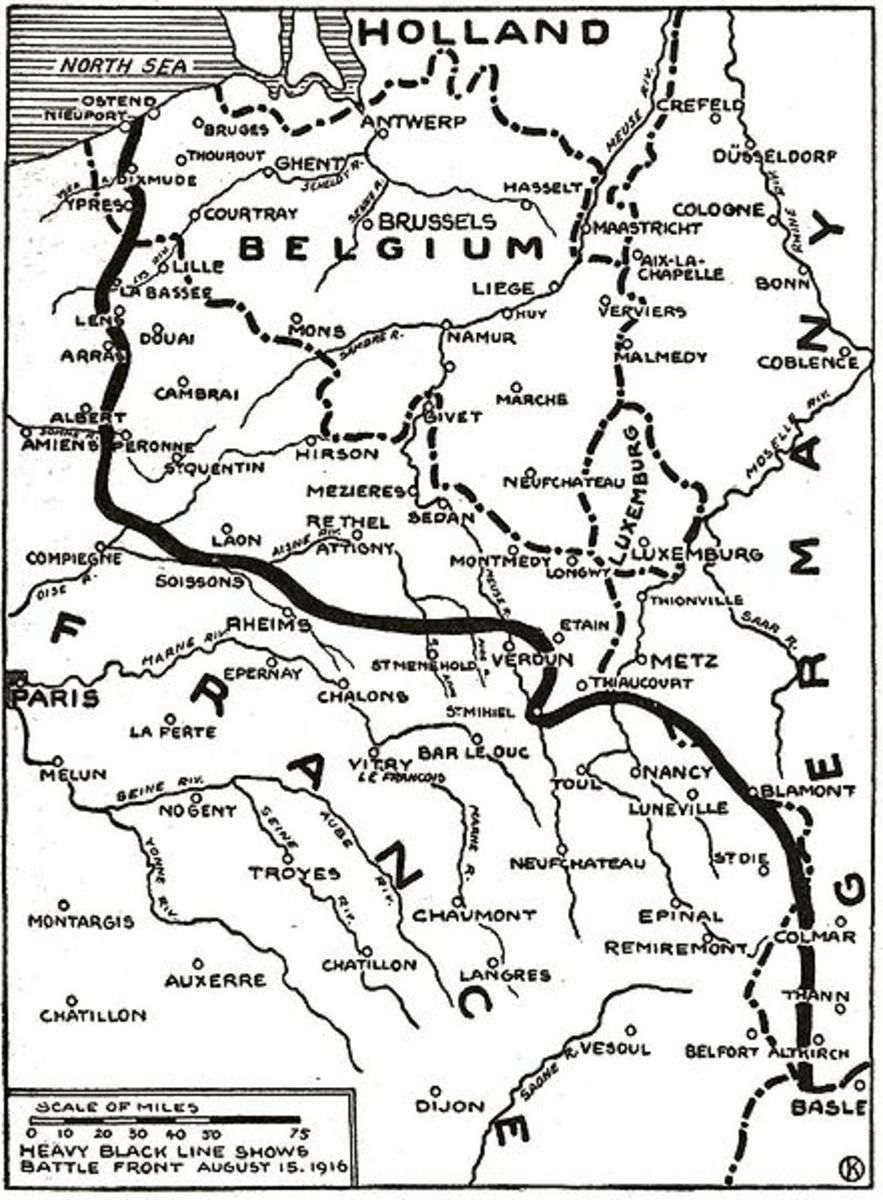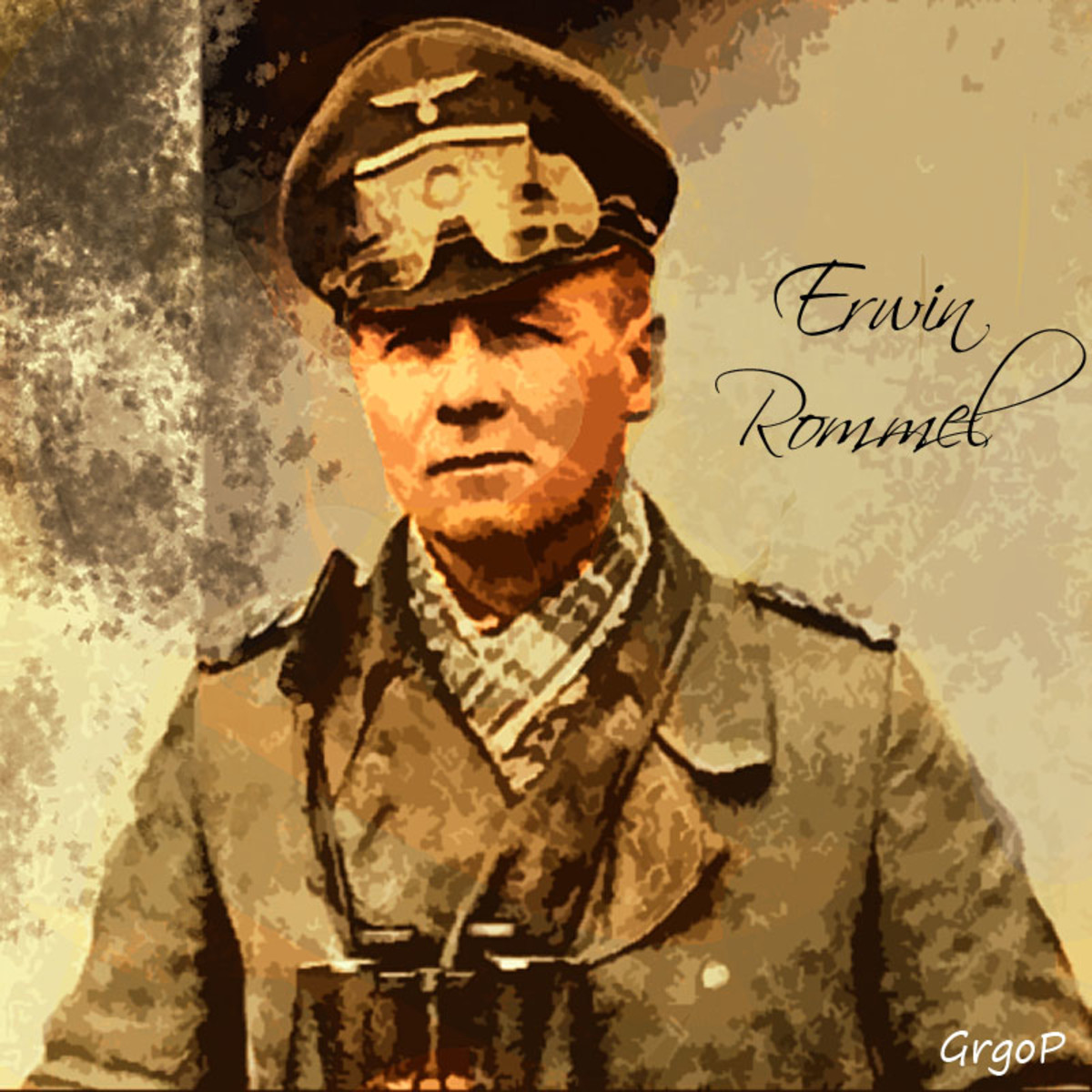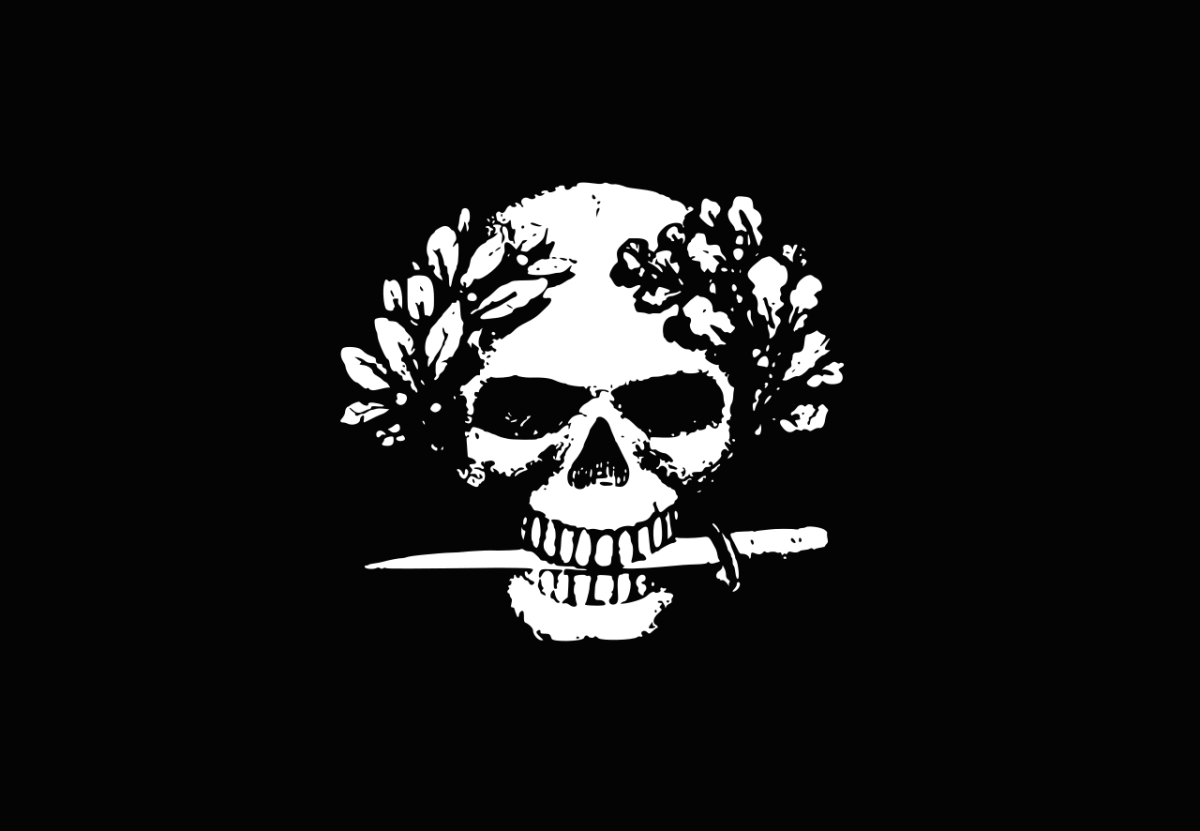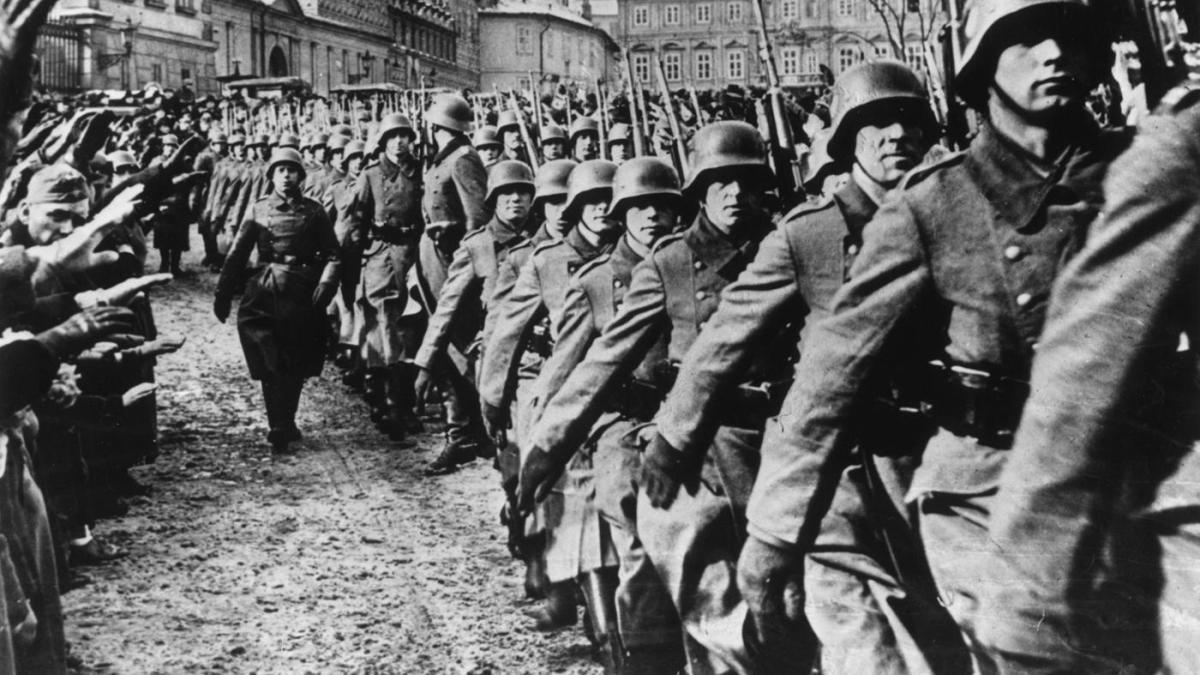- HubPages»
- Education and Science»
- History & Archaeology»
- History of the Modern Era
Invasion on the Normandy Beaches, D-Day 6th June 1944
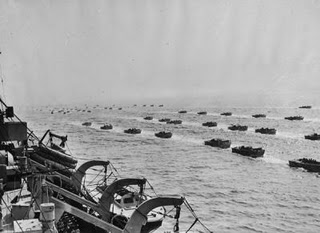
Invasion on the Normandy beaches, D Day 6th June 1944
The invasion fleet sailed through the night of the 5thJune 1944 from its assembly points between Weymouth and the Isle of Wight. As dawn broke the signals were given and soldiers emerged from an assortment of landing craft with others waiting behind them. Men struggled through the foaming waves, holding their rifles above their heads to keep them dry. Other men screamed or fell dead or seriously injured, victims of enemy mines and gun fire.
Each beach had its own targets and its own obstacles.
Able Seaman Ken Oakley of the Royal Naval Commando remembered" the senior officer gave us a briefing.....Don't worry if all the first wave of you are killed,.........we will simply pass over your bodies with more and more men"- extracted from "Forgotten Voices" by Max Arthur.
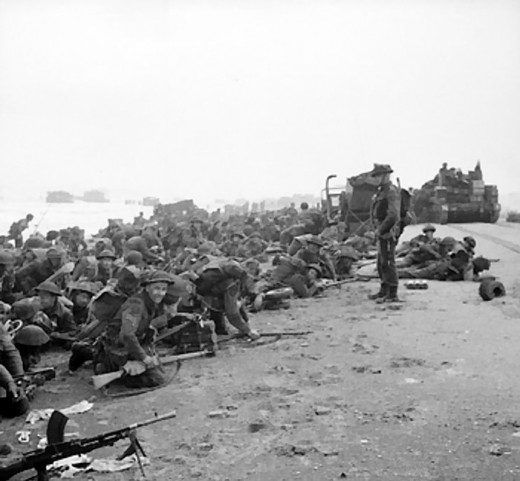
Sword Beach
The Hussars arrived on the beach with tanks and armoured machines whilst heavy gun fire from machine guns , mortars and small arms rained down. Anti tank guns on the Periers Ridge were particularly accurate and men and vehicles succumbed to this bombardment. A large part of the tanks and armoured vehicles managed to get off the beach and the infantry regiments fell in behind them. The armoured squadrons drove off having been tasked to link up with other forces whilst some of the armoured tanks led the infantry along the road to Caen.
To the German High Command the Invasion was not a surprise nor was the location but owing to the Allied subterfuge it was one of several locations which meant that their forces were scattered over a wide area. Although the Allied bombardment was enormous the German soldiers still found the strength to retaliate. Many of the Commanders and N.C.O.’s were battle hardened men who had served in the Russian front but the rank and file were mainly young conscripts who were fresh and eager for battle. The German High Command knew that the Allies had superiority in the air and that the battle must be won on the beaches as once a toe hold was established the Allies would move through Europe with overwhelming manpower and resources.
Periers Ridge
The soldiers managed to get off the beach but progress was stopped by the guns of Periers Ridge. In the early afternoon of the 6thJune the infantry stormed the ridge and tanks bombarded it with heavy fire. Many lives were lost before the Allies managed to take the position. With Periers Ridge taken the soldiers were now on the road to Caen. By late afternoon a battalion of the Shropshire’s joined by tanks and guns of the Staffordshire Yeomanry reached Bieville, which was just over three miles away from Caen.
Abe Seaman Ken Oakley, Naval Commander, remembers "We ran under fire to the top of the beach, where we went to ground"
As the soldiers moved forward they encountered the only Panzer division in the area and succeeded in knocking out five tanks before the enemy withdrew to join its main force at the beaches. At this point the soldiers were halted by heavy fire from a ridge which gave a commanding view of the lower ground and had a distinct advantage for the German defenders. The soldiers were exhausted and had no support so they dug in and waited.
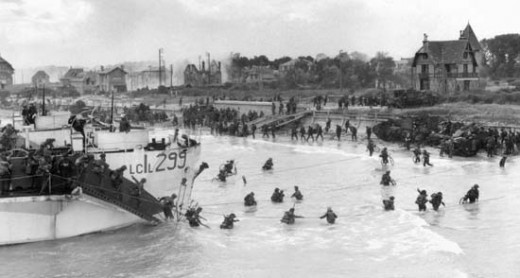
Juno Beach
A Canadian division landed west of Sword Beach on to Juno beach. It was a difficult landing with ships having to steer around dangerous reefs and rocks. The shoreline was embedded with mines and stakes in the shore and the landing craft had to negotiate these obstacles. Of the first 24 assault craft 20 were blown up their wreckage and explosion rose 100 feet into the air and troops were peppered with pieces of wood. Whilst this was happening the enemy was raining a torrent of gun fire down on the Invaders. Many of the soldiers were mown down before they reached the shelter of the sea wall only yards away.
The Canadians still persevered. The infantry went in pushing the enemy out of their deadly machine guns nests and observation points to lessen the deadly fire on the beaches. The Royal Engineers breached the twelve foot high sea wall in places to enable large craters and channels to be drained or bridged. By their courage and skill they managed to clear the way for the tanks whilst still under fire.
By late afternoon the beach was in Allied hands and two brigades of Canadian soldiers with armoured support were pushing inland. The Juno beach forces were tasked with seizing the six miles of the Bayeux-Caen road and railway line and if possible the air landing strip at Carpiquet. The Canadians failed to make it as it had been a very difficult task but by nightfall they had forced themselves six miles inland.
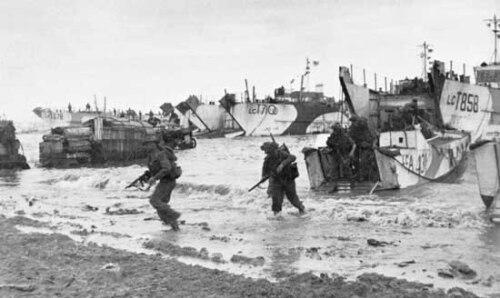
Gold Beach
To the west of Juno beach lay Gold beach. This was the beach where the weight of the main British assault fell. The task was given to the 50th (Northumbrian) Division which, earlier in the war, had fought its way from the North African desert to Sicily. As dawn broke the leading boats came into the beaches of Le Hamel and La Riviere. Off Le Hamel the leading vessel was hit by an enemy shell resulting in it sinking, tanks coming ashore struck mines and other craft who were blown off course by the strong winds as they negotiated their way to the shore.
An infantry brigade came in on the le Hamel side and were stopped by a hail of enemy fire. These troops were soaking wet from their struggles through the waves and many of the men were still suffering from seasickness after being thrown around in the waves.
As it was so difficult to break through the German defences they swung east and reached Les Roquettes, marching to the west and seizing Asnelles-sur-mer. From here the big guns at Le Hamel the German strongpoint could be attacked. It was these guns that had done so much damage to the soldiers and equipment coming ashore on the beaches.
At the same time a second brigade landed at La Riviere and spearheaded by a battalion of the East Yorkshires and Green Howards, went straight into attack. Tanks and soldiers from the Infantry fought through the streets, house by house until the enemy was destroyed. The incoming soldiers destroyed a lot of property and by nightfall the coast was aflame with burning buildings. During the morning further reinforcements had arrived and by afternoon the big guns at Le Hamel had been captured. Forces were ready to attack further but held on until the rest of the Invasion force was in position.
Francis O'Neill of the Army Photographic Unit recalled "We came across British bodies....the first one I saw was an Infantryman........he had no head........and there was no head near him"
extract from "Forgotten Voices" by Max Arthur
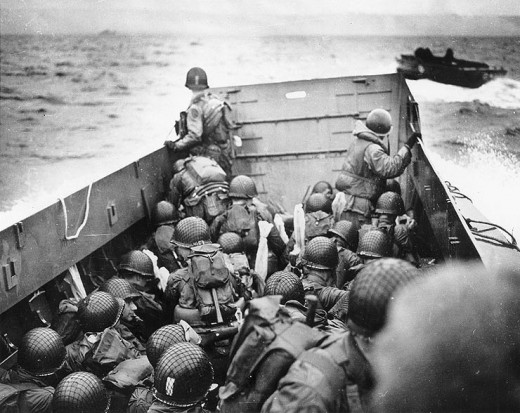
Omaha Beach
The Americans were landing on Omaha beach to the west of the other beaches. Like other soldiers the crossing had been stormy but many of the troops had been in the freezing water for over an hour before they could scramble ashore. Boats and landing craft were smashed and thirty tanks and many guns were swamped and sank. In support of the attack the great guns of the naval ships boomed out against the shore line and bombers dropped their bombs on the enemy defences. As the troops came into position the bombing and guns stopped to enable them to scramble ashore.
Despite the heavy bombardment the defences on the beach were still almost intact. The planes had misjudged the drop zone and had bombed too far inland so that the beaches were intact. As the landing craft moved in they were targeted by the defence and blown apart, the men escaping the blazing vehicles were mown down by machine guns. As the soldiers pushed up the beaches they were blown apart by land mines. The Engineers fought to clear the beach and many were killed trying to do this. Men and vehicles poured onto the beach but after some hours it was clear that progress was not being made off the beach and that there was utter chaos on the beach, word was sent back to the transporters to stop any more vehicles landing on the beach. The scene was chaos a well known remark by a US colonel was that there were only two kinds of men on the beach, “the dead and those who are going to die”.
The Americans spent all day and all night clinging onto the beach, they could not break out. The German High Command had reinforced the garrison defending the beach with a “crack” infantry division which was well established with linking pillboxes and gun emplacements. Supplies could not get through, most men by the end of the day were hungry and weary and cold, worn down by being continually shot at by the German defenders. The soldiers fought bravely clinging onto the hand hold that they had made and not retreating. The Americans had refused to use the assorted though perhaps bizarre machinery preferred by the British such as their flails, flame throwers and swimming tanks. On the 6th June 1944 1000 American soldiers died on Omaha beach.
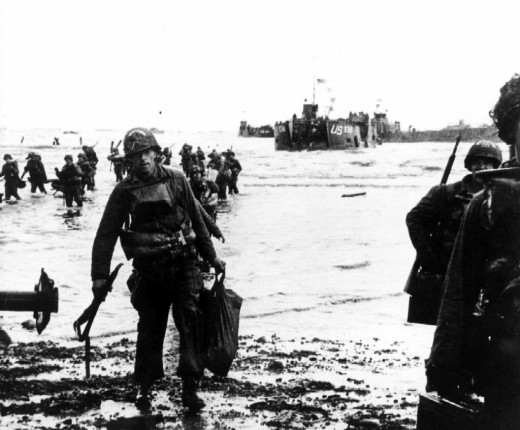
Utah Beach
This was the final landing site on the Normandy coast. It was separated from Omaha beach by ten miles of flat countryside that had been flooded by the Germans. With no protection from troops from other beaches and any possible help from Omaha beach being impossible because of their own difficulties the soldiers at Utah beach were isolated and on their own.
The American 7th corps had been tasked with landing on the beach and joining up with the American Airborne troops and capture Cherbourg. The beaches were bombarded from the sea and the incoming assault craft smothered the beaches with rocket missiles and machine –gun fire. There was little opposition from the German defenders apart from the fortifications of La Madeleine and some pillboxes. The force had landed at the wrong part of the beach but it was a part that was lightly defended and the main struggle was with the sea and the flooded land.
It was a quick attack in two hours the soldiers were off the beach attacking enemy strongpoint’s. The 7th corps made rapid progress searching for villages though often wading through neck high water carrying their rifles and ammunition high above their heads. By midnight the entire division was ashore and casualties were light, the two leading regiments had lost only 12 men. The soldiers pushed forward north to Cherbourg where they were held up by the German defenders.
By the end of one day, the 6th June 1944 over 156,000 soldiers had been landed in France. Ships that had unloaded their cargo had returned to Britain and were loading up in anticipation of a swift return. General Montgomery reported “ As a result of the D day operations a foothold had been gained on the continent of Europe”. Men had died and were injured. Some 2,500 men were killed and 6,500 wounded. Although a “success” there was still chaos and many days of hard fighting lay ahead for the Allies. Most soldiers were bewildered and thankful that they were still alive. They had been fighting and carrying packs weighing nearly 88lb and they were tired and hungry. The lucky ones ate more than their emergency rations and had a fitful nights sleep awaiting the horrors of the next day.


